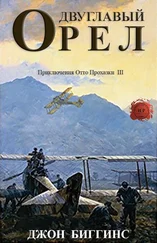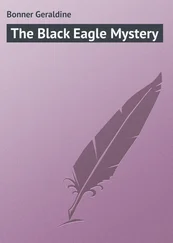With all that in mind you will perhaps understand my trepidation as I examined a relief-map of the Julian Alps. Laden down like that I was very doubtful that the Lloyd would be able to reach its advertised ceiling of 4,500 metres. In fact three thousand seemed to be expecting a great deal, and that was uncomfortably close to the height of some of the loftier peaks. In that aerial war over the Alps many a machine came to grief by running out of altitude, its engine labouring desperately in the thin, cold air as its pilot struggled in vain to lift it over a mountain ridge.
Another worrying consequence of the weight of our wireless set was that we would be flying unarmed: there was simply not enough lift to carry a machine gun, nor enough space left in the cockpit to work it if we had. Toth and I would have only our pistols to defend ourselves. However, some cover would be provided against the possibility of the Italians sending a Nieuport up after us. One of the k.u.k. Fliegertruppe’s impressive total of three fighter aircraft—a German-supplied Fokker Eindecker— would be detached from Flik 4 at Wippach and sent to the field at Veldes, from where it would fly to escort us over Monte Nero. I must say that I was none too happy about this arrangement: the previous week I had been talking with our senior ranker-pilot, Stabsfeldwebel Zwierzkowski. He had recently been able to test-fly a newly delivered Eindecker against an Italian Nieuport which had run out of petrol over our lines some weeks before and landed at Prosecco. No comparison, he had reported: the German aeroplane’s only good point was its machine gun firing through the propeller arc. Otherwise he had found it to be slow and unresponsive, with a poor rate of climb, restricted downward vision because of the wings and a disturbingly flimsy feel about it. But the Nieuport though, that was a real lady, “eine echte Dame”: climbed like an electric lift and as agile as a cat. The only thing he had not much liked was the machine gun mounted above the top wing—difficult to reload in flight and the magazine held only fifty or so rounds. But in view of the Nieuport’s other virtues, he said, he doubted whether as many as fifty rounds would be required for it to do its work.
I think that i have seldom been struck so forcibly as on that August morning by the sheer fortuity of human existence; by the contrast between the serene majesty of the natural creation and the puny bellicosity of men. As we flew northwards along the valley of the Isonzo the pin-point flashes of the early-morning fire-fight crackled over the mountain slopes below. Then the sun came up at last over the looming mass of the Julian Alps ahead of us, turning the patchy summer snow on the triple summit of Triglav to a blaze of pink and orange. It seemed so absurd, so blasphemous almost, to be fighting for possession of these indifferent mountains, as if two rival strains of microbe should be disputing ownership of a granite boulder. Perhaps the intrinsic craziness of war was less obvious on the plains of Galicia, where a marching soldier was usually higher than anything within sight.
But there: if the absurdity of it all was so plain to me, seated safely up here in the whistling cockpit of an aeroplane two thousand or so metres above suffering humanity, I doubted whether my philosophical reflections would bring much solace to the poor devils down there in the trenches and battery positions. I tried to make out the main features on the map as we flew northwards over Tolmein. Hauptmann Kraliczek’s form giving us our detailed orders for the mission had specified, for reasons known only to himself, that we were to cross the trench lines at Monte Sabotino, just across the river from Gorz, then turn northwards to fly over Italian- held territory until we crossed the lines once more near Tolmein. But I was damned if I was going to have any of that. One of the first and most important things a career military officer learns is just how far he can go in ignoring orders, and I was little inclined to take Kraliczek’s flying instructions too seriously. We had flown down the Vippaco to Gorz, round the edge of the Selva di Ternova and the Bainsizza Plateau, then turned sharp starboard to follow the Isonzo up to Tolmein, staying safely on our own side of the deep valley for most of the way. Not the least of the hazards of flying an aeroplane in that war in the Alps was that ground fire was liable to come at you not only from below but from either side as well, and on occasion (though mercifully it never happened to me) from above.
In any case, “lines” was altogether too grand a description for the string of outposts and belts of barbed wire which straggled up and down the mountain ridges around Tolmein. I could just make out where they climbed up from the valley at Vollaria to the peak of Mrzli Vrh, then up to just beneath the summit of Monte Nero ahead of us. I had intended that we should turn north-west over Tolmein to take us towards Monte Nero, but as I saw tracer fire coming up at us from Mrzli changed my mind and decided to veer away to the east. But how was I to communicate this change of flight plan to Toth? There was no point in shouting in his ear in the roaring wind, and he barely understood German in any case. Then suddenly a thought struck me. Why not? I reached for my notepad and pencil, and scrawled “Verte ad orientem XX grada—altitudiem sustine.” I tapped Toth on the shoulder and showed him the message. He looked mildly surprised—then nodded and turned the steering wheel to bank us away; just in time, as it happened, since a flak shellburst to port of us with a bright orange flash and a cloud of black smoke. I was pleased to have avoided that little unpleasantness, but I was even more delighted that Toth and I seemed to have established communication at last, even if by such unconventional means.
We arrived over Schlanke Emma at 0825 as arranged. The weather was good and the mist was lifting rapidly in the valley on the other side of the mountain. It looked as if shooting would commence as planned. I reached down to flick the switch for powering up the transmitter, saw that the blue spark was flickering across the gap as the toothed wheel began to spin, then leant over the side to fire a white rocket: the signal to the battery wireless operators that I had started transmitting. I gazed at the jumble of forest and bare rock below. Even though I knew from the map where it was hidden, there was no visible sign of the Skoda howitzer lurking among the pine trees: the camouflage experts had done their job too well for that. I tapped out the pre-arranged letters “K-U-K” on the Morse key, and saw a white flare arch up from among the trees to signal that they were receiving us. There was a pause as we circled above. Surely something had gone wrong—no, there was the green rocket, the signal for us to begin our work. The enormous gun was loaded and ready to fire. Our task now was to find its target.
That, I had realised from the outset, would not be easy. The Italians were no fools and had done a thorough job themselves of camouflaging their howitzer battery in its mountain valley, even hanging up screens of wire mesh to break up the noise of firing and prevent us from using sound- location to get a cross-bearing on them. I also knew perfectly well that as soon as an aeroplane appeared above them they would cease firing until it had gone. So in the event it was an extraordinary piece of luck that one of the howitzers should just have fired its first ranging shell of the day as we came over the ridge of the mountain. I missed the flash, but my binoculars caught the remains of the brown puff of cordite smoke that it left behind. Hastily I fumbled with the pencil in my thick flying gloves to mark the position on the map, then tapped out its co-ordinates on the Morse key as Toth banked us around to the south. That should give our gunners an area a kilometre square to range upon. Once they were hitting that I would use a crude system of letter-and-number signals to correct their shooting: “U” then so many metres for “Overshoot,” “K”—“Kurz”—for “Undershoot,” “L” for “Too far left” and “R” for “Too far right.” The aim was to signal the conclusion of the process by a single letter: “V” for “Volltreffer”—“Direct hit.” From what I knew of the Skoda 42cm howitzer I doubted very much whether more than one “V” would be necessary. The thing spoke but seldom, I understood, but when it did its arguments were of impressive finality.
Читать дальше












